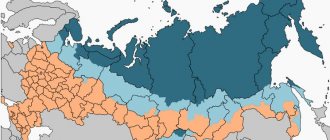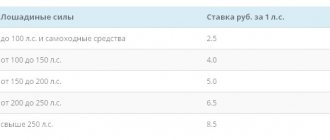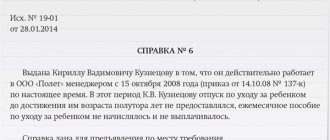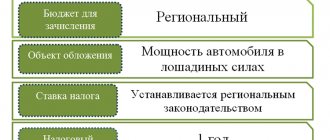Home / Labor Law / Payment and Benefits / Pension
Back
Published: March 27, 2016
Reading time: 11 min
5
17302
A number of regions of Russia are characterized by difficult climatic and other conditions associated with increased health hazards, as well as a high cost of living due to natural reasons. For this reason, various measures to support the population are applied at the local and regional level, aimed at equalizing income and maintaining material equality.
One of these tools is the use of regional coefficients, which are established at the level of the Government of the Russian Federation.
- Concept and determining factors
- What payments are subject to the regional coefficient?
- Regional coefficients in the Russian Federation in 2021
- How is the district coefficient used in calculations?
What is the regional coefficient?
The coefficient, depending on the climatic zone of work and residence, is called regional.
This measure was established back in the days of the USSR and now continues to operate in order to equalize the average earnings for residents of the country. After all, for example, in the Northern regions, the cost of a grocery package is much more expensive than in the central regions. Additions to the list of territories of the Far North, in force since 1967, were made in 2013 after two districts of the Khanty-Mansiysk Autonomous Okrug were included in them.
The application of regional coefficients to earnings is established by the Labor Code (Part 2 of Article 146 and Part 3 of Article 285). The procedure itself and their sizes are determined by the Government of the Russian Federation. Currently, such a normative act has not been adopted and until its adoption, the old norms continue to apply.
The basic sizes are values in the range of 1.15 - 2. Participants in the expedition to Antarctica are subject to a regional coefficient of 3. An additional payment is established for all employees in official labor relations working in the areas specified in the list.
Commercial organizations have the right to set the size of the regional allowance independently, fixing its value in local regulations.
Should the regional coefficient be reflected in the work book?
No! The application of the Republic of Kazakhstan is established at the legislative level and is a state guarantee. Therefore, such a condition is essential when drawing up an employment contract and must be stated in it along with the amount of remuneration for labor.
The procedure for applying and the size of the labor code can be prescribed in the collective agreement or the organization’s salary regulations. You can provide a link to these documents in your employment contract.
Regional coefficient by regions of Russia in 2018 in the table
In 2021, the following coefficients apply, table:
| Order number | Region | Coefficient |
| 1 | Republic of Adygea | Indefined |
| 2 | Altai Republic | 1,4 |
| 3 | Republic of Bashkortostan | 1,15 |
| 4 | Republic of Buryatia, entire territory | 1,2 |
| Barguzinsky, Kurumkansky, Okinsky districts | 1,3 | |
| Bauntovsky, Muisky, Severobaikalsky districts, Severobaikalsk | 1,7 | |
| 5 | Republic of Dagestan, place of residence at an altitude of 1500-2000 meters above the sea | 1,15 |
| place of residence at an altitude of 2000-3000 meters above the sea | 1,2 | |
| 6 | The Republic of Ingushetia | Indefined |
| 7 | Kabardino-Balkarian Republic | Indefined |
| 8 | Republic of Kalmykia (the territory is divided into many zones with their own coefficient. If a settlement within the zone has a supply of drinking water, then the coefficient there decreases by 0.1) | 1,1-1,3 |
| 9 | Karachay-Cherkess Republic | Indefined |
| 10 | Republic of Karelia | |
| Kondopoga, Pitkyaranta, Prionezhsky, Pryazhinsky, Suoyarvsky, Lakhdenpokhsky, Olonetsky districts, the cities of Petrozavodsk, Sortavala | 1,15 | |
| Medvezhyegorsky, Muezersky, Pudozhsky, Segezhsky districts | 1,3 | |
| Belomorsky, Kalevalsky, Kemsky, Loukhsky districts, Kostomuksha | 1,4 | |
| 11 | Komi Republic | |
| Knyazhnogorsky, Kortkorossky, Sysolsky, Syktyvdinsky, Priluzsky, Ust-Vymsky, Ust-Kulomsky, Koygorodsky districts, Syktyvkar | 1,2 | |
| Pechora, Sosnogorsk, Izhemsky, Ust-Tsilemsky, Troitsko-Pechorsky, Udora districts | 1,3 | |
| Vuktyl district, Vuktyl city | 1,4 | |
| Usinsky district, Inta cities, Usinsk | 1,5 | |
| Vorkuta | 1,6 | |
| 12 | Mari El Republic | Indefined |
| 13 | The Republic of Mordovia | Indefined |
| 14 | The Republic of Sakha (Yakutia) | |
| areas located up to the Arctic Circle, south of 65 degrees. northern latitude | 1,7 | |
| areas located beyond the Arctic Circle, at least 65° north latitude | 2 | |
| Locations of diamond mining enterprises | 2 | |
| 15 | Republic of North Ossetia Alania | Indefined |
| 16 | Republic of Tatarstan | Indefined |
| 17 | Republic of Tyva, entire territory | 1,4 |
| Mongun-Taiginsky, Tozhinsky, Kyzylsky (territory of Shynaan Rural Administration) districts | 1,5 | |
| 18 | Udmurt republic | 1,15 |
| 19 | The Republic of Khakassia | 1,3 |
| 20 | Chechen Republic | Indefined |
| 21 | Chuvash Republic – Chuvashia | Indefined |
| 22 | Altai Territory, entire territory | 1,15 |
| Aleysky, Baevsky, Blagoveshchensky, Burlinsky, Volchikhinsky, Egorievsky, Zavyalovsky, Klyuchevsky, Kulundinsky, Mamontovsky, Mikhailovsky, German, Novichikhinsky, Pankrushikhinsky, Pospelikhinsky, Rodinsky, Romanovsky, Rubtsovsky, Slavgorodsky, Suetsky, Tabunsky, Uglovsky, Khabarovsky, Shipunovsky districts, cities regional subordination Aleysk, Slavgorod, Yarovoye | 1,25 | |
| 23 | Krasnodar region | Indefined |
| 24 | Krasnoyarsk Territory, entire territory | 1,3 |
| Kezhemsky district | 1,6 | |
| Norilsk and settlements subordinate to its Administration | 1,8 | |
| 25 | Primorsky Krai, entire territory | 1,3 |
| settlements of the Taezhny and Ternisty mines in the Krasnoarmeysky district | 1,4 | |
| 26 | Stavropol region | Indefined |
| 27 | Khabarovsk region | |
| Khabarovsk, Bikinsky, Vyazemsky, named after Lazo, Nanaisky districts, Khabarovsk | 1,3 | |
| Ayano-Maysky, Tuguro-Chumikansky, Nikolaevsky, named after Polina Osipenko, Komsomolsky, Sovetsko-Gavansky, Vaninsky, Solnechny, Amursky, Verkhnebureinsky, Ulchsky districts, Komsomolsk-on-Amur | 1,5 | |
| Okhotsk region | 1,7 | |
| 28 | Amur region | |
| Arkharinsky, Belogorsky, Blagoveshchensky, Bureya, Zavitinsky, Ivanovsky, Konstantinovsky, Mazanovsky, Mikhailovsky, Oktyabrsky, Romnensky, Svobodnensky, Seryshevsky, Tambov districts, the cities of Blagoveshchensk, Belogorsk, Raichikhinsk, Svobodny | 1,3 | |
| Magdachinsky, Shimanovsky districts, Shimanovsk | 1,4 | |
| Skovorodinsky district | 1,5 | |
| Zeya, Selemdzhinsky, Tynda districts, cities of Zeya, Tynda | 1,7 | |
| 29 | Arkhangelsk region, entire territory | 1,2 |
| Leshukovsky, Pinezhsky districts | 1,4 | |
| 30 | Astrakhan region (applied depending on the degree of desert and waterlessness of the area) | 1,1-1,35 |
| 31 | Belgorod region | Indefined |
| 32 | Bryansk region | Indefined |
| 33 | Vladimir region | Indefined |
| 34 | Volgograd region | Indefined |
| 35 | Vologda Region | |
| Babaevsky, Vologda, Gryazovets, Kaduysky, Mezhdurechensky, Sokolsky, Ustyuzhensky, Chagodoshchensky, Cherepovets, Sheksninsky districts, Vologda | 1,15 | |
| Cherepovets with the territory subordinate to the city Council of People's Deputies | 1,25 | |
| 36 | Voronezh region | Indefined |
| 37 | Ivanovo region | Indefined |
| 38 | Irkutsk region | |
| throughout the entire territory (with the exception of the city of Angarsk, the city of Cheremkhovo and the Cheremkhovo district, the city of Tulun and the Tulunsky district and employees of the Eastern Railway, for which decisions of the regional executive committee and resolutions of the Head of Administration were adopted) | 1,3 | |
| Bratsky district, Bratsk | 1,4 | |
| Ust-Ilimsky, Nizhneilimsky districts, Ust-Ilimsk | 1,6 | |
| Ust-Kutsky district | 1,7 | |
| 39 | Kaliningrad region | Indefined |
| 40 | Kaluga region | Indefined |
| 41 | Kamchatka region, entire territory | 1,8 |
| Commander Islands | 2 | |
| 42 | Kemerovo region | 1,3 |
| 43 | Kirov region | |
| Afanasyevsky, Belokholunitsky, Bogorodsky, Verkhnekamsky, Darovsky, Zuevsky, Kirovo-Chepetsky, Kamensky, Luzsky, Murashinsky, Omutninsky, Nagorsky, Oparinsky, Podosinovsky, Slobodskoy, Uninsky, Felensky, Khalturinsky, Yuryansky districts, Kirov with the territory subordinate to the city Council of People's Deputies | 1,15 | |
| 44 | Kostroma Region (applies to wages of employees of logging, timber floating, timber transshipment enterprises, organizations and chemical forestry enterprises) | 1,15 |
| 45 | Kurgan region | 1,15 |
| 46 | Kursk region | Indefined |
| 47 | Leningrad region | Indefined |
| 48 | Lipetsk region | Indefined |
| 49 | Magadan Region | 1,7 |
| 50 | Moscow region | Indefined |
| 51 | Murmansk region, entire territory | 1,5 |
| village Fog | 1,7 | |
| Murmansk-140 | 1,8 | |
| 52 | Nizhny Novgorod Region | Indefined |
| 53 | Novgorod region | Indefined |
| 54 | Novosibirsk region | 1,25 |
| 55 | Omsk region | 1,15 |
| 56 | Orenburg region | 1,15 |
| 57 | Oryol Region | Indefined |
| 58 | Penza region | Indefined |
| 59 | Perm region, entire territory | 1,15 |
| Krasnovishersky, Cherdynsky districts | 1,2 | |
| 60 | Pskov region | Indefined |
| 61 | Rostov region | |
| Zavetinsky, Remontnensky districts; Dubovsky, Zimovnikovsky, Orlovsky, Proletarsky districts, bounded from the west by the line of the Salsk - Volgograd railway, from the north by the border with the Volgograd region, from the east, northeast and south - by the border with the Republic of Kalmykia (in the regional centers of the village of Dubovskoye, the village of Zimovniki, the village . Orlovsky and Proletarsk, the coefficient does not apply) | 1,1 | |
| 62 | Ryazan Oblast | Indefined |
| 63 | Samara Region | Indefined |
| 64 | Saratov region | Indefined |
| 65 | Sakhalin region | |
| Aleksandrovsk-Sakhalinsky, Anivsky, Dolinsky, Korsakovsky, Makarovsky, Nevelsky, Poronaisky, Smirnykhovsky, Tomarinsky, Tymovsky, Uglegorsky, Kholmsky districts, Yuzhno-Sakhalinsk | 1,6 | |
| Nogliki, Okha districts | 1,8 | |
| Kuril, North Kuril and South Kuril regions | 2 | |
| 66 | Sverdlovsk region | 1,15 |
| Garinsky, Taborinsky districts, in territories under the Administrative subordination of Ivdelsky, Karpinsky, Krasnoturinsky and Severouralsky city councils (including cities) | 1,2 | |
| 67 | Smolensk region | Indefined |
| 68 | Tambov Region | Indefined |
| 69 | Tver region | Indefined |
| 70 | Tomsk region | |
| Bakcharsky, Krivosheinsky, Molchanovsky, Teguldetsky districts | 1,3 | |
| Alexandrovsky, Verkhneketsky, Kargasoksky, Kolpashevo, Parabelsky, Chainsky districts, cities of Kedrovy, Kolpashevo, Strezhevoy | 1,5 | |
| Oil and gas industry enterprises located north of 60 degrees north. latitude | 1,7 | |
| 71 | Tula region | Indefined |
| 72 | Tyumen region, entire territory | 1,15 |
| Uvatsky district | 1,5 | |
| Tobolsk, Vagai districts, Tobolsk | 1,217 | |
| 73 | Ulyanovsk region | Indefined |
| 74 | Chelyabinsk region: | 1,15 |
| 75 | Chita region, entire territory | 1,4 |
| Tungokochensky, Chernyshevsky, Tungiro-Olekminsky, Mogochinsky districts | 1,5 | |
| Kalarsky district | 1,7 | |
| 76 | Yaroslavl region | Indefined |
| 77 | Moscow | Indefined |
| 78 | Saint Petersburg | Indefined |
| 79 | Jewish Autonomous Region | 1,3 |
| 80 | Aginsky Buryat Autonomous Okrug | 1,4 |
| 81 | Komi-Permyak Autonomous Okrug, entire territory | 1,15 |
| Gaininsky district, Kochevsky, Kosinsky districts | 1,2 | |
| 82 | Koryak Autonomous Okrug, entire territory | 1,6 |
| For construction workers | 1,8 | |
| For forestry workers | 2 | |
| 83 | Nenets Autonomous Okrug | 1,8 |
| 84 | Taimyr (Dolgano-Nenets) Autonomous Okrug | 1,8 |
| 85 | Ust-Ordynsky Buryat Autonomous Okrug | 1,3 |
| 86 | Khanty-Mansiysk Autonomous Okrug - Ugra | 1,7 |
| 87 | Chukotka Autonomous Okrug | 2 |
| 88 | Evenki Autonomous Okrug | |
| Baykitsky, Tungusko-Chunsky districts | 1,5 | |
| Ilimpiysky district | 1,6 | |
| 89 | Yamalo-Nenets Autonomous Okrug, north of the Arctic Circle | 1,8 |
| South of the Arctic Circle | 1,7 |
When is it used?
The most commonly used regional coefficient for salaries.
This coefficient is subject to accrual to employees at the place of actual performance of labor duties. An employer may be located in the central territories of the country, but have a separate division in the Far North region. Remuneration to employees of such a division should be made using the “northern” coefficient.
Charges that increase by the regional coefficient:
- Minimum wage and all payments depending on it;
- wages (salary, tariff rate, etc.);
- any additional payments to earnings, including compensation payments, bonuses, additional payments for length of service, etc.;
- payment of sick leave;
- additional payments made by the employer to employees employed in hazardous working conditions, in accordance with the Special Labor Conditions;
- payments under contracts with seasonal workers, part-time workers;
- compensation for part-time and flexible working hours;
- pension payments;
- other payments under an employment contract or collective agreement.
All of these payments are valid until the citizen works and/or lives in areas where the increasing coefficient is applied. This rule also applies to pension amounts. Moving to an area with a different coefficient or no coefficient automatically adjusts the regional supplement to the pension.
Table of territorial OSAGO coefficients in 2021
To date, the government has not adopted a law that would fully describe the rules for processing payments and other important instructions for workers in difficult working conditions.
To calculate the northern allowance you will need to refer to a number of bills:
- Article 129 and 136 of the Labor Code of the Russian Federation - this law on northern allowances indicates material incentives for citizens whose work takes place in non-standard conditions;
- Federal Law No. 4520-1 – determines the procedure for calculating payments;
- Order of the Ministry of Labor of the RSFSR No. 2 - fixes all territories belonging to the extreme northern regions and are eligible for financial incentives.
Legislative documents clearly define residents of the northern regions, who are expected to receive a northern salary supplement.
Interest payments are expected for all categories of working citizens:
- In case of official employment;
- When working part-time;
- When working as a shift worker;
- Working remotely.
The calculation of wages depends on the duration of the labor process in difficult climatic conditions.
The main rules that apply to the northern allowance are:
- Accrual is made only when performing labor activities;
- The size of the payment depends on the percentage of the salary without taking into account the regional coefficient;
- Vacation pay, travel allowances, financial assistance and other one-time payments are also not taken into account;
- All employers are required to pay the northern supplement. Such rules also apply to those who are documented to be located in two regions, but employees work in the Far North;
- Work experience is calculated as a sum, not taking into account breaks between jobs. Even after a long work break, your seniority will not be lost, and the additional payment will be made in the amount of your existing seniority.
The documents clearly define residents of the northern regions, who are expected to receive a northern salary supplement.
In addition, citizens living in special regions in connection with employment have the right to increase the established salary, taking into account the regional coefficient. Where is the regional pension coefficient applied? According to Labor and Pension legislation, the regional coefficient increases the amount of payments to persons who permanently reside in the regions:
- with difficult climatic conditions;
- with a polluted environment;
- with a low level of infrastructure organization due to natural factors.
In each case, the regional coefficient acts as compensation to citizens in connection with difficult, harmful, dangerous living conditions. The list of districts in which the increasing coefficient is applied, as well as the indicator of such a coefficient, is enshrined in regional legislative acts.
The regional coefficient is an indicator (multiplier) of the relative increase in employee salaries, which employers are required to take into account when calculating wages. It allows you to compensate for additional expenses (physiological, material) of citizens living in the Far North of Russia and territories that are equivalent to it due to climatic and other factors. Its size varies depending on the severity of working conditions and living conditions from 1.1 to 2.0. If we are talking about workers of Antarctic expeditions, then this figure increases to 3 points. This state-guaranteed surcharge applies to:
- wages (the number of days worked is not counted, accrual is carried out from the moment the position is received);
- allowances (only those established by the current regulations on tariff categories and rates). For example: for high skill, academic degree, class of profession;
- payment to an employee for seasonal work;
- surcharge for length of service and other cumulative surcharges;
- payment for part-time activities;
- annual remuneration;
- compensation for dangerous/harmful working conditions (this includes night shifts);
- sick leave payments;
- remuneration for part-time work.
The regional coefficient does not apply to such types of payments as:
- material assistance and remuneration, but on the condition that the payments are one-time in nature and are not taken into account in the employment contract;
- vacation pay (the amount is calculated from the salary received when applying the regional coefficient);
- northern allowances (awarded for work in the territory of the KS). Northern payments and the multiplier are not interchangeable payments and do not affect each other.
The regional coefficient will also affect the payment of material allowances to military personnel. Citizens of some regions with difficult climatic (working) conditions, who received wages based on the regional coefficient, will continue to receive an increased pension. However, this does not apply to all categories of citizens.
Attention! The pension will increase by the regional coefficient only for those pensioners who live in the territory of the KS and in areas equivalent to it. Those employees who received a salary with an additional payment during their working period, but do not live in the listed territories, will receive a standard pension (not increased by a factor). This norm also applies to pensioners living in the southern and central parts of the Krasnoyarsk Territory. In their case, the calculation of the pension will be carried out taking into account the additional payment to the salary.
Who does it not apply to?
The supplement does not apply to payments that are calculated on the basis of amounts in which she has already participated or do not relate to wages. This:
- material assistance and other compensation payments established as reimbursement of costs associated with the performance of labor or other duties (for example, daily allowances, allowances for working on a rotational basis);
- payments calculated from average earnings (for example, vacation pay);
- one-time bonuses that are not regular;
- northern bonus, which is a separate incentive payment.
Examples of applying the coefficient
Let's look at specific cases of salary calculations using the northern incentive coefficient. Let us take into account that it does not increase all accrued amounts, but only those that are regular.
Wage
Let's say a worker works at a diamond mining enterprise in the Republic of Sakha (Yakutia). For this region the coefficient is set to 2 or 200%.
For March 2021, he is entitled to the following accruals:
- basic salary - 45,000 rubles;
- northern allowance - 5,000 rubles;
- bonus payment - 6,000 rubles;
- financial assistance - 7,000 rubles.
The salary amount is calculated as follows (before tax):
(45,000 + 6,000) x 200% + 7,000 + 5,000 = 114,000 rubles.
The district multiplier applies only to base salary and bonus pay.
Business trips
An employee of an enterprise located in Norilsk goes on a business trip to the islands of the Arctic Ocean.
In this territory, a coefficient of 2 is used, in Norilsk - 1.8.
- To calculate payment, you must use the average daily earnings indicator.
- It is calculated by dividing all accrued amounts by the number of days worked.
- In this case, an increasing multiplier is used for the location of the enterprise - Norilsk.
The islands (travel destination) allowance is not used.
Sick leave payment
An employee of an enterprise located on the Kuril Islands was sick from March 10 to March 15, 2021 (6 days).
- Earnings for the previous two years amounted to: 704,500 rubles.
- Average daily salary: 704,500 rub. / 730 days = 965.07 rub.
- Calculated on the basis of the minimum wage using the regional multiplier (2) is equal to: 7500 rubles. x 2 x 24 months / 730 days = 493.15 rub.
- The actual amount of average daily income is not lower than that calculated on the basis of the minimum wage.
- Consequently, sick leave payment is calculated according to it without taking into account the multiplier: 6 days x 965.07 rubles. = 5790.42 rub.
When calculating sick leave, the average daily payment indicator is compared with the same one based on the minimum wage. It should not be lower than the latter.
One-time benefit for the birth of a child
A woman worker of the Kamchatka organization gave birth to a baby. She is entitled to a lump sum payment.
The benefit is calculated according to the following rule:
RUB 16,759.09 x 1.6 = 26,814.544 rubles.
The regional coefficient is a measure of support for the population living in difficult conditions. It can significantly reduce the outflow of workers to more favorable regions of the country.
Northern surcharge
For residents of areas of the Far North and territories equated to it, a percentage increase in wages, called “northern”, is established. Its size depends on the following parameters:
- employee age;
- terrain groups;
- work experience.
The regulatory acts for establishing and calculating length of service for the purposes of applying the northern bonus is the Decree of the Government of the Russian Federation of October 7, 1996 No. 1012. Thus, for an employee it increases depending on the number of years worked in stages and can reach maximum values from 30 to 100% of earnings.
Participate in the calculation of the group of localities:
- the first group - regions of the Far North with particularly difficult climatic conditions;
- the second group - the remaining regions of the Far North;
- the third group - areas equated to regions of the Far North;
- the fourth group - other areas with special climatic regions.
To determine the amount of the percentage supplement to the earnings of persons under 30 years of age, the main fact is the period of residence in this area. After a year of residence for young people, an allowance is established, which gradually increases to a maximum value.
For persons aged 30 years and over, the percentage increase is established in the following order:
- first group of localities - 10% of earnings after 6 months of work, then increasing by 10% every 6 months and reaching a maximum of 100% of earnings;
- second group of localities - 10% of earnings after 6 months of work, with an increase of 10% every next 6 months. Once 60% is reached, the increase is 10% annually to a maximum of 80%;
- third group of localities - 10% of earnings after the first goal of work, then with an increase every year by 10% to 50%;
- fourth group of localities - 10% after the first year of operation, increasing annually by 10% to a maximum of 30%.
Northern allowances and regional coefficients 2021 by region
Northern bonuses and regional coefficients are amounts that increase wages, pensions, stipends, benefits or compensation in accordance with the region of location and length of work (life) in the region.
The regional coefficient of wages is the ratio of wages in a region with difficult living and working conditions to ordinary ones. Using these indicators, salaries are compared in all regions of the country. The norms of labor law, in particular the Labor Code of the Russian Federation, do not define in any way how a region is considered the territory where increased coefficients apply. However, in 1967, a law was passed establishing a list of such regions.
To calculate the northern bonus for residents of an area equated to the Far North, a 10% rate of salary is used, which is calculated after a year of work. After each year of work, the bonus increases by 10%. The maximum bonus in these areas is 50% of wages.
Increasing wage coefficients are used not only in the North, but also in other regions with harsh climatic conditions. Unlike northern bonuses, their amount does not depend on the length of work experience. According to the law, this additional payment is accrued to all employees from the first day of employment.
Pensioners who have worked in the Far North or equivalent localities (MKS) and/or live in these regions will receive an increased fixed pension payment in 2021. The new pension law retains this right after January 1, 2021! But what will this additional payment be? Let's talk about this and provide a table with new sizes.
- at least 15 years of work in the KS districts and at least 25/20 years of total experience (men/women, respectively). They are given an increase in the amount of 50% of the fixed payment.
- at least 20 years of work in the ISS and at least 25/20 years of total experience. Bonus – 30% of the fixed payment.
The amount of the bonus depends both on the length of service in the given climatic conditions and on the region. As soon as the “northern” work experience begins, the employee has the right to a salary supplement in the amount of 10% of this salary. Now the additional payment will increase every six months by 10% until it reaches its maximum established in the region.
- islands and seas of the Arctic Ocean, except for the islands of the White Sea;
- the Republic of Sakha, where enterprises and construction sites of the diamond mining industry are located, at the Aikhal and Udachnaya deposits, the Deputy and Kular mines;
- some districts of the Sakhalin region;
- Aleutsky district of Kamchatka region;
- Chukotka Autonomous Okrug.
Features of northern payments for different employees
There are different conditions for applying the northern coefficient for workers whose work is of the following nature:
- traveling or business trip associated with a stay in the Far North or territories assigned to it, makes it possible to receive a regional coefficient of earnings, regardless of the location of the main unit of the organization;
- seasonal, rotational or fixed-term, when an employee temporarily performs labor functions in such areas, are provided with guarantees in accordance with Art. 302 Labor Code;
- part-time work in areas with established coefficients and wage allowances is paid using them (Article 285 of the Labor Code);
- Remote and home work (distance work) is paid taking into account allowances, if this is stipulated in the employment contract, and the employee permanently resides in areas classified as northern territories.
How is it counted?
The “northern bonus” is not established from the first day of work. There is a general rule according to which its gradual application is carried out.
- The first increase in payments occurs from the date of determining six months of work experience in the appropriate conditions. Salary increases by 10%
- Every six months it increases by the same amount.
- The coefficient is increased until the maximum value for the region is reached.
In regions that are equal in conditions to the Far North, the first increase in accruals occurs when a person has worked for a year.
Further incentives also occur each subsequent year of labor. The Northern supplement is not charged on the following amounts:
- material assistance (letter of the Ministry of Labor of Russia No. 716-7 dated July 22, 1999);
- one-time bonus;
- regional coefficient;
- field allowance;
- average earnings, because the amount of the bonus is already taken into account when calculating average earnings.
Features of the regional coefficient for young professionals
Until January 1, 2005, there was a rule in the Russian Federation according to which citizens under 30 years of age received maximum northern allowances from the first working day.
It was cancelled. However, the Ministry of Health ordered that this preference be retained for some citizens. Namely:
- A young man who lived in the North before 01/01/05 for at least five years and did not celebrate his 30th birthday receives the maximum northern allowance.
- In addition, after six months of work, young specialists are given 20% of the northern ones.
- Over the next six months of successful service, another 20% is added.
- This happens again. That is, for one and a half years of service, citizens under 30 years of age receive a 60% bonus.
- Then it is increased in the same amount, but in increments of one year. Growth continues up to 100%.
Young people have the opportunity to double their salary within 3.5 years if they work in the Far North and equivalent regions of Russia:
- the step is 10% per six months;
- the limit value is 50%.
What is the size of the regional coefficient in the Murmansk region
In this region, several regional coefficients have been established, taking into account the characteristics of individual regions. In 2020, the following RK values are relevant:
| 1,8 | for the city of Murmansk-140 and all territories under its administrative subordination |
| 1,7 | for the village of Tumanny (located in the Kola region) |
| 1,5 | for the cities of Severomorsk and Olenegorsk, Pechenga and Kola municipal districts, as well as for workers in the gas and oil industries |
| 1,4 | in other territories of the Murmansk region for all federal institutions |
Features of work in the Far North: regional coefficients
We continue to publish material that examines the specifics of labor relations with employees in the Far North and equivalent areas. The concept of state support for the northern regions and other documents The concept of state support for the economic and social development of the northern regions was approved by a decree of the Government of the Russian Federation of March 7, 2000.
No. 198. The concept was developed in accordance with Decree of the Government of the Russian Federation of December 31, 1997 No. 1664
“On reforming the system of state support for the regions of the North”
(hereinafter referred to as Resolution No. 1664).
It is designed for the long term and is based on the Federal Law of June 19, 1996.
No. 78-FZ “On the fundamentals of state regulation of socio-economic development of the North of the Russian Federation” (hereinafter referred to as Federal Law No. 78-FZ). The preamble of the Concept states: “State policy in the field of socio-economic development of the northern regions is determined by their importance in ensuring the economic development of the country, its geopolitical and strategic interests, and the need for radical solutions to pressing problems.”
The document defines the place of the Northern regions in the Russian economy, characterizes the current system of state support for the Northern regions, defines the goals, objectives and principles of reforming the system of state support for the Northern regions, presents the main directions of state support for the Northern regions, and also provides a forecast for the expected results of state support for the Northern regions .
What is the northern coefficient in Murmansk
A well-known question: how are the regional coefficient and the northern supplement calculated? People who live in the far north and equivalent areas have the right to receive bonuses to their wages.
Residents of the Murmansk, Arkhangelsk regions, Kamchatka Territory, Chukotka Autonomous Okrug, etc.
They know that for living in harsh winter conditions the state provides them with an additional payment to their basic income. This right is enshrined in Art. 317 of the Labor Code of the Russian Federation and in Federal Law No. 4520-1 of February 19, 1993. This additional payment is a percentage of the basic salary that is added to the monthly salary. They are set differently for each region.
In this article we will not list them all, but take the Murmansk region as an example: After officially working for the first 6 months, you will earn a 10% polar allowance.
Then, for every new six months, you will receive another 10%. And so on until you accumulate 60%. Then 10% will be added every year, and will end when it reaches 80%.
If you are not yet 30 years old, and you have lived in the regions of the far north for a long time (not After the first six months of work, you will begin to receive 20% of the basic salary more. And so, similarly to the first case, every 6 months + 20%.
When you reach 60%, 20% will be added annually. The premium cannot be more than 80% in the Murmansk region. Ch. 50 of the Labor Code of the Russian Federation provides for a northern allowance for all payments made by the employer.
1) Added to remuneration for work (this item means a fixed salary).







